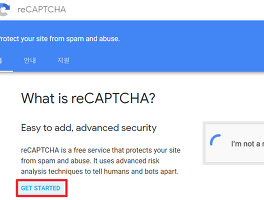참조 - http://ossian.tistory.com/category/%5BWeb%5D/WEB%20%26%20WAS
Apache 설치
1. 설치
yum install -y httpd
2. 방화벽
firewall-cmd --permanent --add-port=80/tcp
firewall-cmd --reload
firewall-cmd --list-all
3. 실행
systemctl start httpd
systemctl enable httpd
Python 설치
1. EPEL
rpm -Uvh https://dl.fedoraproject.org/pub/epel/epel-release-latest-7.noarch.rpm
(가끔 알 수 업는 오류가 나타나는데 다시한번 하면 설치가 된다)
2. python3 설치
yum install -y https://centos7.iuscommunity.org/ius-release.rpm(python 설치를 위한 패키지)
yum install -y python36u python36u-libs python36u-devel python36u-pip
3. pip 업그레이드
python3.6 -m pip install -U pip
MOD_WSGI 설치
mod_wsgi 설치
yum install -y python36yu-mod_wsgi
Django 설치
pip 3.6 install django
Django 프로젝트 생성
Apache 설정
1. vhost.conf 파일 생성후 아래 내용 추가
- vi /etc/httpd/conf.d/vhost.conf
<VirtualHost *:80>
ServerName localhost
WSGIScriptAlias / /opt/Web/Web/wsgi.py
WSGIDaemonProcess Web python-path=/opt/Web/Web
<Directory /opt/Web/Web>
<Files wsgi.py>
AllowOverride none
Require all granted
</Files>
</Directory>
</VirtualHost>
<VirtulaHost *:80> 그림에서는 소문자이지만 'V' 대문자가 맞다
2. static file 설정 (image, css, js)
1) vi /etc/httpd/conf.d/vhost.conf 를 다시 편집하여 아래 빨간네모의 내용을 추가한다
- Alias /static "/opt/Web/authentication/static"
=> html 파일 내에서 /static 이라는 link를 사용할때 /opt/Web/authentication/static으로 치환하겠다는 뜻
1. Alias /static : 치환을 당할 문자열을 지정
2. "/opt/Web/authentication/static" : 치환될 문자열을 지정
- 따라서 실제 static 파일들이 위치하고 있는 경로를 지정해주어야 한다

* 추가적으로 django에서 테스트하기 위해 사용했던 {% load staticfiles %} 는 필요가 없다
html단에서 static 파일들의 위치만 알 수 있다면 알아서 불러와 html파일을 만들어 표시할 수 있기 때문이다
3. gedit으로 wsgi.py 파일 편집후 빨간 네모안의 내용들 추가
4. httpd.conf 파일의 Directory 권한 변경
- vi /etc/httpd/conf/httpd.conf
5. Apache 재시작
- systemctl restart httpd
Error
Internal Server Error
- 이경우 apache의 error log를 확인하는것이 좋다
vi /var/log/httpd/error_log
=> django 가 설치되지 않아 나타나는 오류이다
Forbidden
- selinux가 켜져있는지 확인한다
=> setenforce 0
가상환경에서 벗어나 Django 설치
1. deactivate 를 통해 가상환경에서 벗어난다
2. 장고를 설치한다
pip3.6 install django
접속
virtualEnv
python3.6 -m pip install virtualenv
python3.6 -m virtualenv venv
cd venv
source bin/activate
python3.6 -m pip install django
1) django-admin startproject testproject
장고 프로젝트 생성
2) python3.6 manage.py migrate
3) python3.6 manage.py startapp testapp
4) vi testapp/views.py
from django.shortcuts import render, HttpResponse
def main(request):
return HttpResponse(request, 'hi')
5) vi testproject/urls.py
'FrameWork > Django' 카테고리의 다른 글
| Django - 로그인 페이지에 reCaptcha v2 사용하기 (0) | 2018.12.27 |
|---|---|
| Django - CentOS7 django , mariaDB 연동 (0) | 2018.12.22 |
| Django 다른 포트로 runserver시 에러(엑세스 권한에 의해 숨겨진 소켓에 엑세스를 시도했습니다) (0) | 2018.12.21 |
| Django - invalid python 3.7 interpreter 에러 (0) | 2018.12.19 |
| Django session 이용 방법 (0) | 2018.12.18 |













